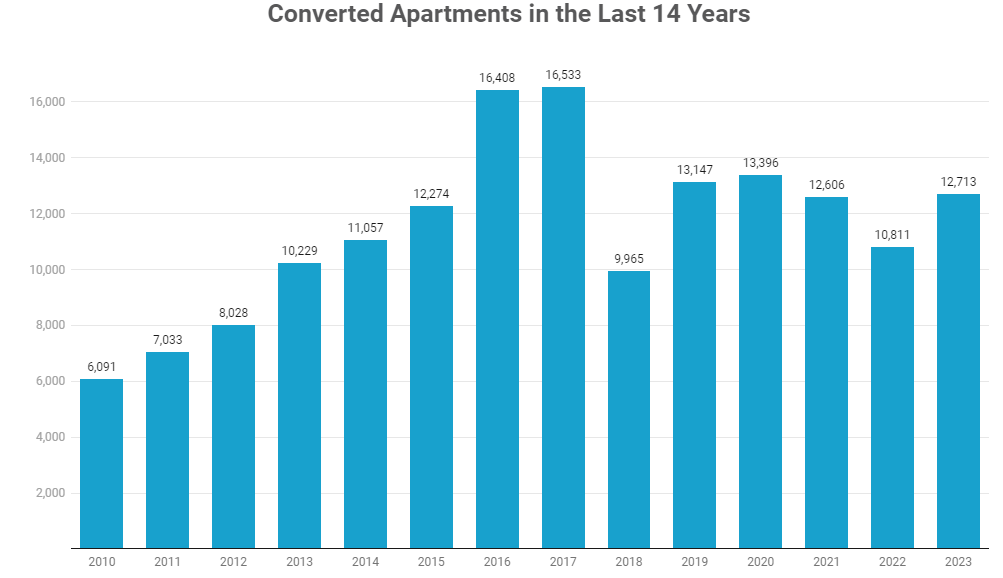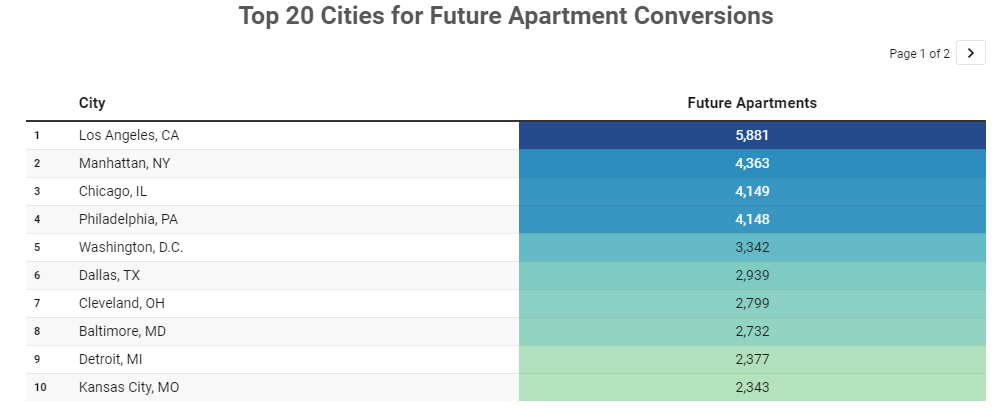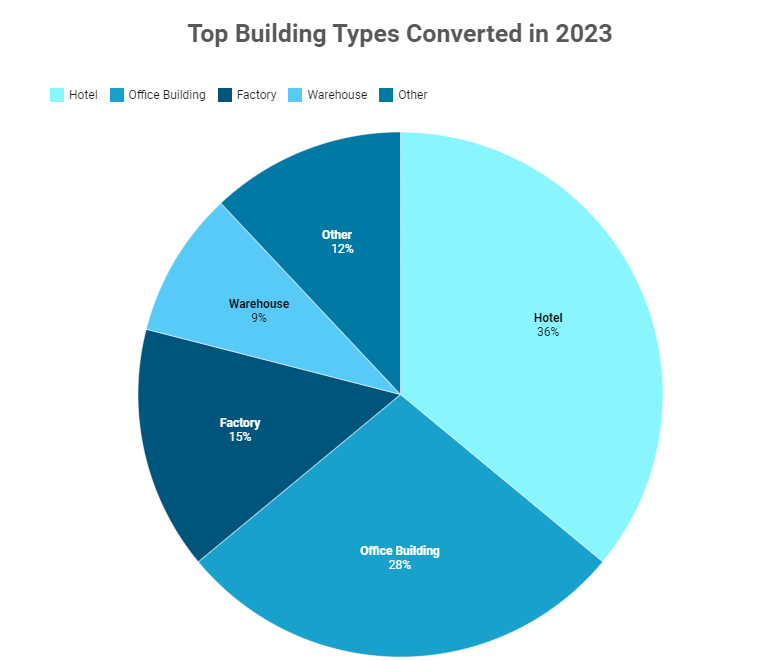It’s no secret that the COVID-19 pandemic changed the face of real estate—and based on the location, it was for better, or worse.
In an emergency meeting, when the Federal Reserve’s Federal Open Market Committee slashed interest rates to zero, it created a housing boom—especially with the work from home movement—where people were free to move to places that better suited their needs.
But in the places that are built out, take New York City, Chicago, or Washington D.C. for example, another trend is underway: turning abandoned buildings, empty offices, and unused hotels into apartments, single-family homes, or condos.
In no place was this more prevalent across the country than in the Borough of Manhattan, the metropolis of America, where according to RentCafe, a total of 12,713 new units were created in 2023, a substantial increase of 17.6% compared to a year before.

According to RentCafe, this trend is expected to continue in the coming years and their analysis of the Yardi Matrix shows that the adaptive reuse apartments are poised for further growth—data predicts that up to 151,000 are currently in various stages of conversion, with 58,000 of those being repurposed from empty office spaces.
In an era dominated by environmental concerns, adaptive reuse offers a sustainable alternative to new housing construction.
“The process minimizes the environmental impact associated with demolition and the production of new materials, making it an eco-friendly approach to design and construction,” said Doug Ressler, Manager of Business Intelligence at Yardi Matrix.
But, while office conversions are the darlings of future adaptive reuse projects, it was hotel conversions that stole the show in 2023: nationwide, more than 4,500 apartments were created through repurposing hotels. This is followed by rental units transformed from former office spaces, with repurposed factories following at a great distance.
It’s not news that the hotel sector has faced many challenges and undergone transformations in recent years — particularly due to the pandemic, which caused a flight to quality in the tourism sector. Unsurprisingly, outdated hotels bore the brunt of reduced traveling and steep debt service costs, prompting many owners to offload their underperforming properties.

Naturally, this created an opportunity for developers to swiftly repurpose these properties into apartment buildings, especially in places boasting many hotel properties, such as New York City. And, because hotels already come equipped with essential infrastructure (plumbing, electrical systems, and IT), these adaptive reuse projects offer a faster and often more cost-effective method to create housing units, particularly in dense, urban areas where space for new construction is scarce or pricey.
To that end, adaptive reuse projects from former hotels are at an all-time high in the U.S.: A total of 4,556 apartments were created from repurposed hotels in 2023. That’s a 38.8% uptick since the previous year and almost double the volume of 2021. Interestingly, the only year to see a boom in hotel conversions pre-pandemic was 2016, when 3,061 apartments were created from such repurposing projects.
Click here to see the data, and more insights into this trend from RentCafe.






